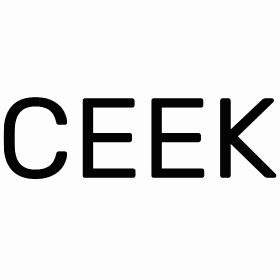How to Sell Directly Through Social Media
While social media is a fantastic tool for building an audience and growing awareness for your brand or business, it can also be a fantastic method for selling your products or services directly to your customers.
How you sell on social media can depend on the platform you’re using and what your goals are. Before you think about how you’re going to sell on social media, it’s important to spend some time thinking about where your target customer can be found and which platforms they can be found on.
Top social media marketing agencies suggest that you should first decide on your platforms and then nail down specific goals for each, as metrics and marks of success will differ slightly, depending on the channel you have chosen.
To help get you started, let’s take a look at some of the most popular social media platforms around and how you can get started with selling on each of them.
Selling on Facebook
Facebook has the largest audience of all the social media networks available today. With nearly 2.45 billion monthly active users, the opportunities for businesses, brands and individuals to sell through the platform have never been better.
Here are some of the different ways you can sell on Facebook:
Facebook Shops
In response to more and more businesses and brands shifting to selling online, Facebook launched Facebook Shops, a mobile-first shopping experience where businesses can easily create an online store on Facebook and Instagram for free.
Through Facebook shops, you can choose the items you want to feature and connect with your customers through WhatsApp, Messenger or Instagram Direct Messaging. These features give you a lot of flexibility when you’re interacting and engaging with your customers. Through Facebook Shops, you can choose the items you want to feature and connect with your customers through WhatsApp, Messenger, or Instagram Direct Messaging. These features give you a lot of flexibility when you’re interacting and engaging with your customers.
To enable Facebook shops, you’ll need to:
- Set up an account with Facebook’s commerce manager
- Create a collection
- Customise your storefront
- Publish your shop
For an in-depth guide on each of these steps, check out this comprehensive guide from Website Builder Expert.
Facebook Advertising
If you’ve ever advertised your business online, you’ll probably have come across Facebook advertising before. Through Facebook’s advertising platform, you can hone in on the exact type of customer you want to.
Facebook allows you to create:
- Core audiences based on a user’s age, interests, geography and much more
- Custom audiences which allow you to target your advertising to those who’ve already engaged with your business, online or offline
- Lookalike audiences so you can reach new people whose interests are similar or overlap with your best customers.
For more information on the different types of Facebook audiences and fore steps on getting started with Facebook advertising, you can check out the Facebook Business support pages and this guide from Hootsuite.
Selling on Instagram
With one billion monthly users, Instagram isn’t far behind Facebook in terms of popularity, and its growth shows no signs of slowing down. This gives brands and businesses a great opportunity to sell their products and services through the platform.

To get started with selling products on Instagram, you’ll need to make sure you have an Instagram business profile set up. Once you have a business profile set up, you’ll be able to:
- Track how many new followers your profile gets each week
- In-depth demographics about your followers such as their location, age and gender
Alongside these demographics, having a business profile on Instagram gives you access to Instagram shopping. Similar to Facebook Shopping, Instagram Shopping allows you to create an immersive storefront that showcases your best products to your customers.
Instagram Shopping allows you to share your featured products through your organic posts and stories for your customers to discover and also discover your products within Instagram’s Search & Explore feature.
If someone taps your product in your story, they’ll be taken to a product description page where the user will see:
- An image of the product from your post
- The products description
- The cost of the product
- A link that takes the user directly to your website, where they can purchase your product
For further guidance on setting up your Instagram store, you can refer to Facebook’s Business pages. You can also get help from a variety of social media tools.
Selling on Twitter
While selling through Twitter may not be as prominent as selling through Facebook or Instagram, it’s still a great platform to sell products or services through and grow awareness of your business or brand.
There are a few different ways you can make money through Twitter in 2020, including:
Ads and Promoted Tweets
When you’re getting started with Twitter Advertising, you’ll have the option to choose between promoting your own tweets or running twitter ads.
If you choose to promote your tweets, the tweets you select will reappear in the Twitter streams or Twitter search results of specific users. These tweets could include direct links to product pages on your website, a landing page so your audience can sign up to learn more about a product you’re selling.
Twitter ads are more holistic and allow you to use multiple groups of Tweets to accomplish a single goal for your brand. Through placing Twitter ads, you can set up a campaign to increase your follower account, increase your website clicks or conversions, collect emails from people who express interest in your business and much more.
For more guidance on Twitter, ads check out this guide from Hubspot.
Affiliate Marketing
Twitter is a great platform to not only sell your own products or services but also to sell and promote the products of other brands in your niche or industry.
If you’ve ever signed up as an affiliate to sell a company’s services or products you can use Twitter to engage with other people in your target market and promote any relevant products or services that may be beneficial to them. This approach works particularly well if you’ve built good relations with other individuals or brands in your target market, and if you’ve already built a strong following on Twitter.
It’s important not to spam affiliate links on Twitter needlessly. Focus on building authentic connections with your audience, finding others in your industry to potentially partner with and sharing useful products and services that your followers would be interested in.
Selling Your Own Products or Services
Alongside promoting other brands products and services, you can use Twitter to sell your own. If you’ve got a large Twitter audience, you can tweet links to your products and services; this is particularly effective if you’ve carefully curated your audience and your followers are interested in your niche and brand.
Be careful not to post too many links to your own products or services, posting useful content, answering customer enquiries and posting links to your products when it’s appropriate is a far better long term approach than posting links to your products or services in every tweet.
Choose the Right Platform for Your Business
Facebook, Instagram and Twitter aren’t the only social media platforms you can sell on. Take the time to decide on which social media platform is best for your business or brand, and you can then decide on which products or services you want to sell and the strategy you want to take.

























